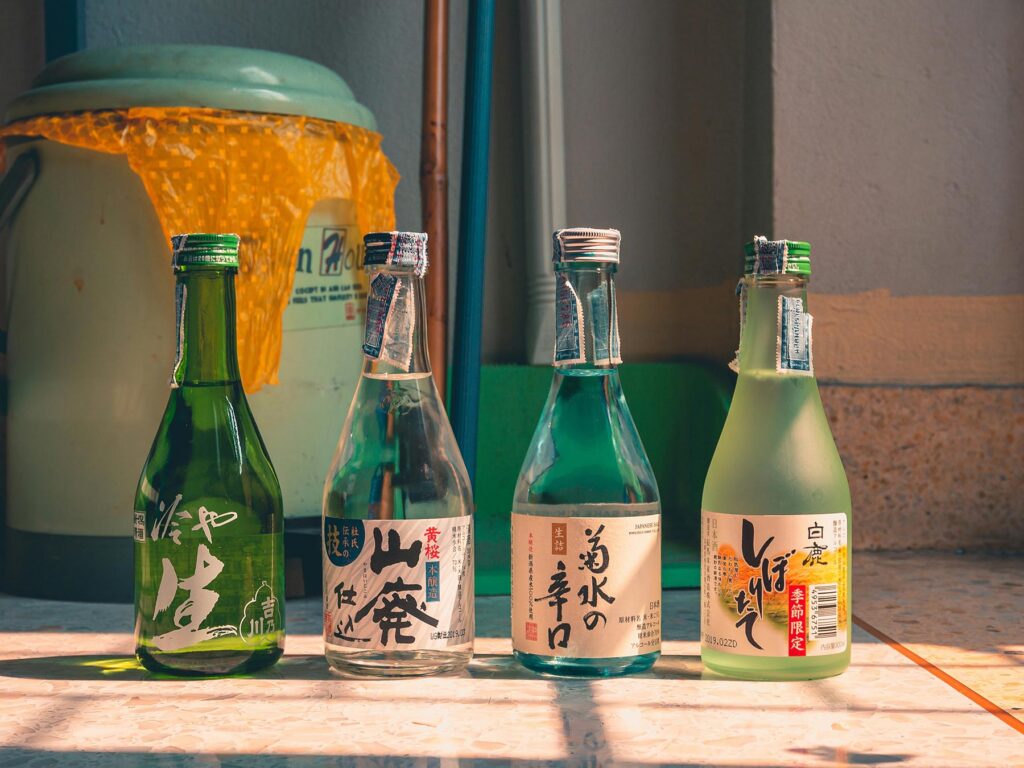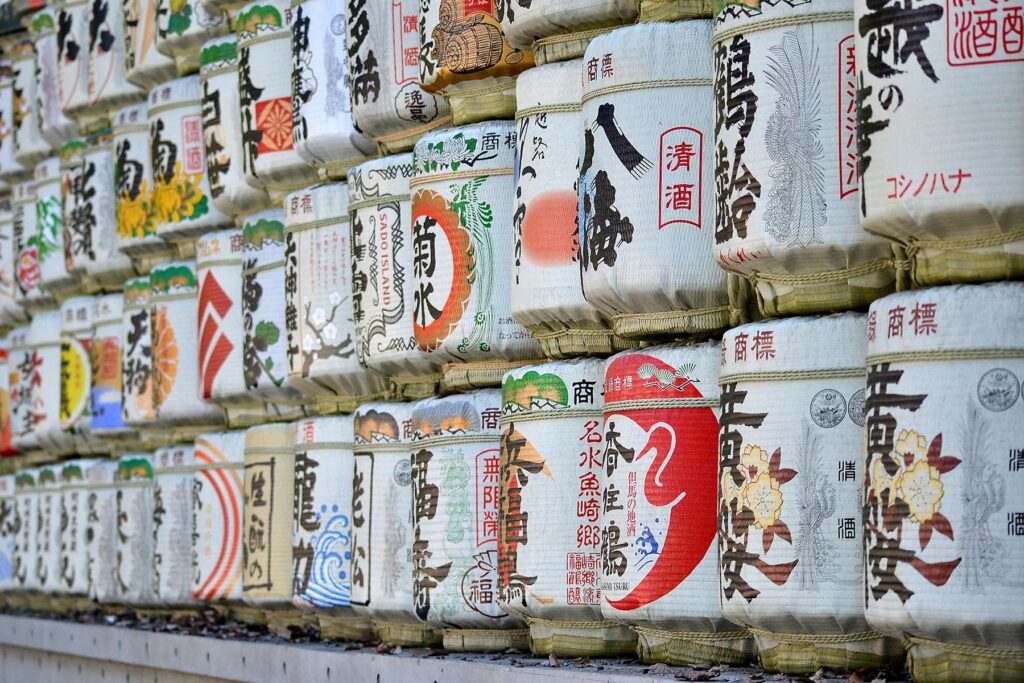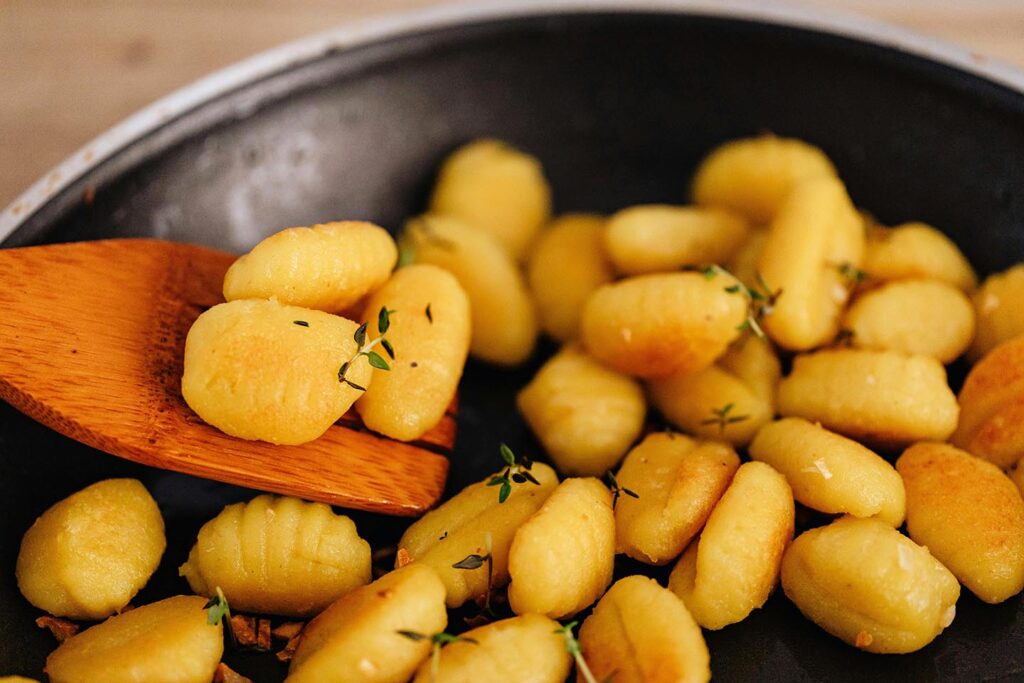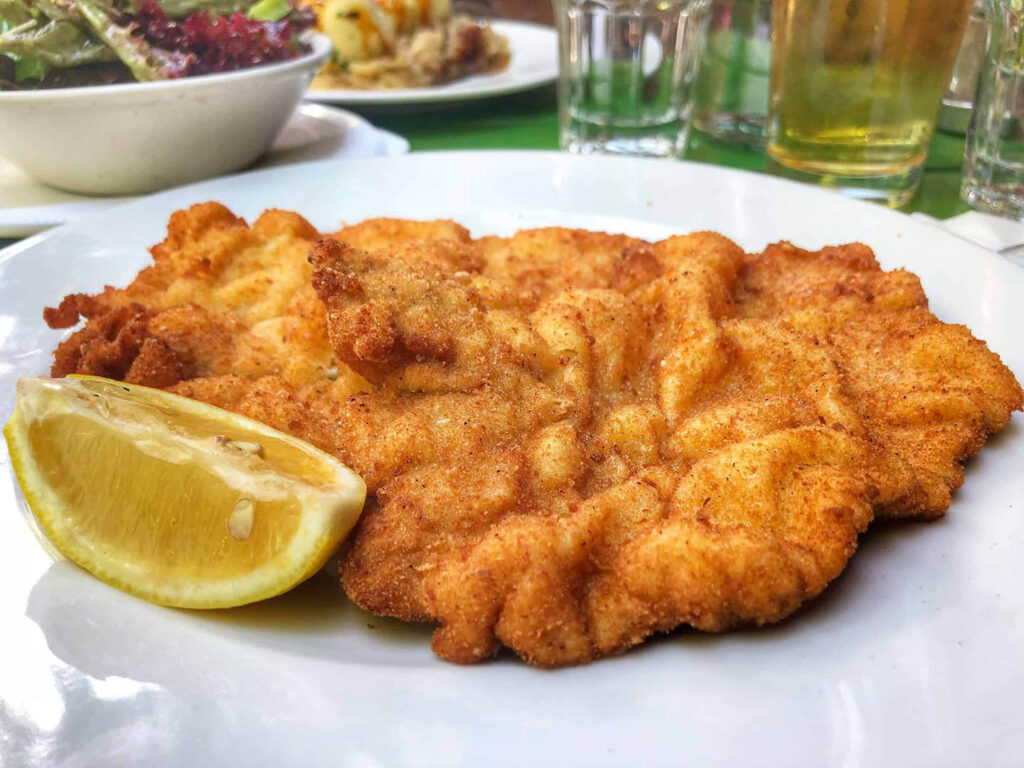
Sake, also known as saké or Japanese rice wine, is an alcoholic beverage originating from Japan. It is made from fermented rice and water, fermentation converting the starches in the rice into sugars and then alcohol. Sake typically has an alcohol content ranging from 15% to 20%, which is higher than many wines but lower than distilled spirits like whiskey or vodka. Sake is traditionally served in small cups called “ochoko” or larger ceramic flasks known as “tokkuri.” The temperature at which it is served can also affect its flavor. It can be served chilled (reishu), at room temperature (jo-on), or gently warmed (atsukan).
Sake has a long history in Japan and is a key part of Japanese culture. The drink symbolizes Japanese craftsmanship and tradition and is enjoyed in various settings, from traditional ceremonies to casual drinking. Sake is often paired with a variety of Japanese dishes, such as sushi, sashimi, tempura, and grilled meats. It complements the umami flavors in Japanese cuisine yet is also pairs well with other international dishes.
How did sake production begin?
Sake has a long and rich history dating back over two millennia. Its origins can be traced to the Yayoi period (circa 300 BCE to 300 CE), when rice cultivation and fermentation techniques were introduced to the Japanese archipelago. Early sake production was a simple process of chewing and spitting out rice, allowing natural enzymes in saliva to break down starches into sugars for fermentation. Over time, sake brewing techniques evolved, with the introduction of koji mold cultivation and the refinement of brewing methods.
By the Nara period (710–794 CE), sake had become an integral part of religious and ceremonial rituals in Japan. Monasteries played a significant role in its production and improvement, contributing to the development of more sophisticated brewing methods. During the Heian period (794–1185 CE), sake gained prominence in the Japanese imperial court, becoming associated with aristocratic culture and poetry.
In the medieval era, sake production spread beyond monasteries, and local breweries began to emerge. The Edo period (1603–1868 CE) saw further advancements in sake brewing techniques and the development of regional styles. The government introduced regulations to standardize sake production and taxation, leading to increased quality control.
The modernization of Japan in the late 19th and early 20th centuries brought significant changes to the sake industry, including the adoption of Western brewing techniques and the introduction of refrigeration. During World War II, sake production was further industrialized to meet the demand of the military.
In recent decades, there has been a resurgence of interest in traditional and artisanal sake brewing methods. Craft breweries and small-scale producers have gained recognition for their dedication to preserving the heritage of sake and experimenting with new flavors and techniques. Today, sake remains an integral part of Japanese culture and is celebrated worldwide for its diverse styles, craftsmanship, and versatility in culinary experiences.

How is sake made?
Sake is primarily made from rice, water, yeast, and koji mold (Aspergillus oryzae). The type of rice, water quality, and the brewing process can all impact the flavor and characteristics of the final beverage. The fermentation process for sake is unique because it involves a parallel fermentation of yeast and koji mold. Koji mold breaks down the rice starches into simpler sugars, which yeast then converts into alcohol. This dual fermentation process contributes to sake’s complex flavor profile.
The brewing of sake is a highly controlled and intricate process, and the quality of the ingredients and the precision of each step greatly influence the final flavor and characteristics of the sake.
Here is a quick overview of how modern sake is typically made:
- Rice: High-quality sake starts with the selection of suitable rice grains. Specially cultivated sake rice varieties, known as “sakamai,” are often used because they have larger grains with a higher starch content, which is crucial for sake production.
- Polishing: The outer layer of each rice grain contains impurities and proteins that can affect the flavor of sake. To remove these impurities, the rice is polished. The degree of polishing is a critical factor in determining the final sake category and quality.
- Washing and Soaking: The polished rice is thoroughly washed and soaked in water to prepare it for steaming. This step helps to achieve the desired moisture content and consistency in the rice.
- Steaming: The soaked rice is steamed to cook it and prepare it for fermentation. The steamed rice is then cooled to a specific temperature.
- Koji: Koji mold (Aspergillus oryzae) is a critical element in sake production; it is cultivated on a portion of the steamed rice, resulting in a culture known as “koji.” The koji mold breaks down the rice starches into simpler sugars necessary for fermentation.
- Yeast: The koji rice, steamed rice, and water are combined in a fermentation tank and then yeast is added to start the fermentation process. Sake yeast strains are carefully selected to contribute specific flavors and aromas to the final product.
- Fermentation: Unlike many alcoholic beverages, sake undergoes parallel fermentation, where the koji mold and yeast work together simultaneously. This dual fermentation process results in the conversion of sugars into alcohol.
- Pressing: After fermentation is complete, the liquid is separated from the solid rice grains and koji mold. This is typically done using a large press, and the liquid that is extracted is known as “moromi.”
- Pasteurization: The moromi is pasteurized to stop fermentation and stabilize the sake. However, some sakes are left unpasteurized (namazake) to retain a different flavor profile.
- Filtration and Maturation: The sake may undergo further filtration and aging to refine its flavor and texture. The duration and method of maturation varies depending on the desired style of sake.
- Bottling: Once the sake is ready, it is typically diluted with water to achieve the desired alcohol content and then bottled.
Throughout the sake-making process, strict quality control measures are employed to maintain consistency and ensure that the sake meets the desired flavor and aroma profiles desired in the final product. The art of sake brewing has been honed over centuries in Japan, resulting in a wide range of sake styles, from dry to sweet and from light and fragrant to rich and full-bodied.

What varieties of sake are there?
Sake comes in various varieties, each with a unique flavor profile, characteristics, and production methods. The beverage can be categorized into different types based on factors such as rice polishing ratio, sweetness, aroma, and more.
Here are some of the main categories and varieties of sake:
- Futsushu: Futsushu is an everyday drinking sake that is typically less expensive and less refined than other premium categories. It may have a wide range of flavor profiles and can be used for various purposes.
- Junmai Sake: Junmai sake is made with only four ingredients: rice, water, yeast, and koji mold. This variety of sake tends to have a fuller, richer flavor and can vary from dry to sweet.
- Honjozo Sake: Honjozo sake is made similarly to Junmai sake but with a small amount of distilled alcohol added to enhance the drink’s aroma and flavor. It is often lighter and more fragrant than Junmai sake.
- Ginjo Sake: Ginjo sake is made from rice with a higher degree of polishing, typically to at least 60% or less of the original grain size. It is known for its floral and fruity aromas, lighter body, and often a more refined taste. Some Ginjo sake is made with added alcohol (Ginjo-shu), while others are pure rice sake (Junmai Ginjo).
- Daiginjo Sake: Daiginjo is the highest grade of sake and is made from rice polished to at least 50% or less of its original size. It is known for its exceptionally clean and delicate flavors, complex aromas, and a high level of craftsmanship. Like Ginjo, it can be made with or without added alcohol.
- Namazake: Namazake is a variety of unpasteurized sake and is often fresher and livelier on the palette, with more pronounced fruitiness and acidity. However, it needs to be stored and handled carefully due to its vulnerability to spoilage.
- Nigori Sake: Nigori sake is an unfiltered variety of sake, which means it retains some rice solids, giving it a cloudy appearance. It is usually sweeter and has a creamy texture due to the presence of these solids.
- Koshu: Koshu sake is aged for an extended period, sometimes several years. This aging process gives the final sake unique flavors, similar to aged wines or spirits.
- Sparkling Sake: Some sake is carbonated to create a sparkling variety. It is often lighter and effervescent, making it a refreshing option.
- Tokubetsu Sake: The word “Tokubetsu” means special, and this designation is used for sake varieties that have been brewed with special attention to specific ingredients or techniques. It can be applied to various styles, such as Tokubetsu Junmai or Tokubetsu Honjozo.
These categories are just the beginning, as there is a vast array of sake styles and regional variations within each category. The choice of which sake to select depends on personal preference and the occasion, whether you are looking for something light and floral or rich and complex to complement your meal or enjoy on its own.
Sake comes in a wide range of flavors and styles, and its appreciation can be similar to that of wine, with connoisseurs savoring the nuances of different brews. Whether enjoyed in traditional settings or as part of contemporary culinary experiences, sake remains an integral part of Japanese culture and is increasingly appreciated by enthusiasts worldwide.
What are your thoughts on sake? Do you enjoy drinking it? What do you pair it with, if anything? Let us know in the comments!



